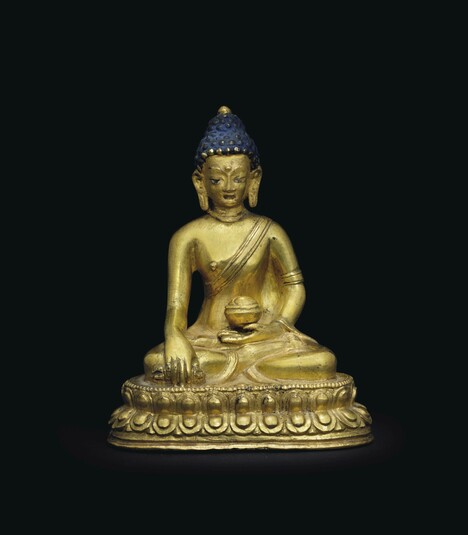
Item: Shakyamuni Buddha
| Origin Location | Tibet |
|---|---|
| Lineages | Buddhist |
| Material | Metal |
| Collection | Private |
Classification: Person
Shakyamuni Buddha (Tibetan: sang gye sha kya tu pa. English: the Enlightened One, Sage of the Shakya Clan).
A Buddha is known for having thirty-two major and eighty minor distinguishing physical characteristics (marks) based on the Indian cultural description of a Universal Monarch (Chakravartin) - the highest and most developed male form. Only a few of these 112 marks are ever depicted in art, examples of such marks are the ushnisha on the top of the head, the urnakesha between the eyes, the three curved horizontal lines on the neck, and a Dharma Wheel impression on the palms of the hands and soles of the feet.
This figure of the Buddha is unusual in that he is holding a vajra scepter in the outstretched right hand. The vajra could easily be interpreted as an attribute of Akshobhya Buddha and so change the identification for this sculptural piece. However, the vajra here is most likely representing the the location as being Vajrasana in Northern India where the Buddha achieved enlightenment under the bodhi tree. It is more common for the vajra to be placed on the seat in front of the Buddha rather than held in the hand.
"Born in the Shakya race through skillful means and compassion, destroying the army of Mara who was unable to be destroyed by others, with a body radiant like a mountain of gold; homage to you, King of Shakya." (Tibetan liturgical verse).
Jeff Watt 2-2014
Sculpture: Buddha
Shakyamuni Buddha: Main Page
Collection: Christie's. Jan. 28, 2014
